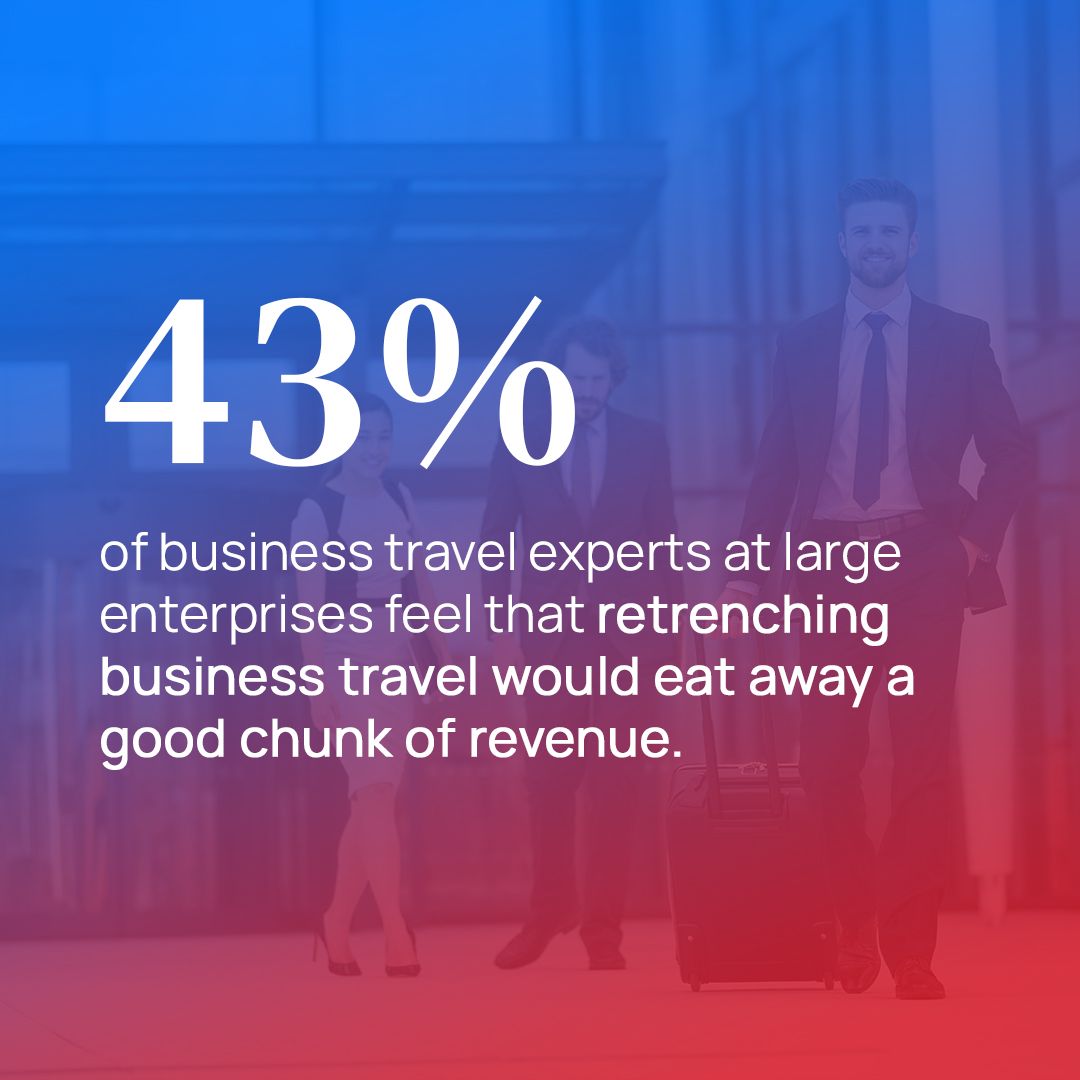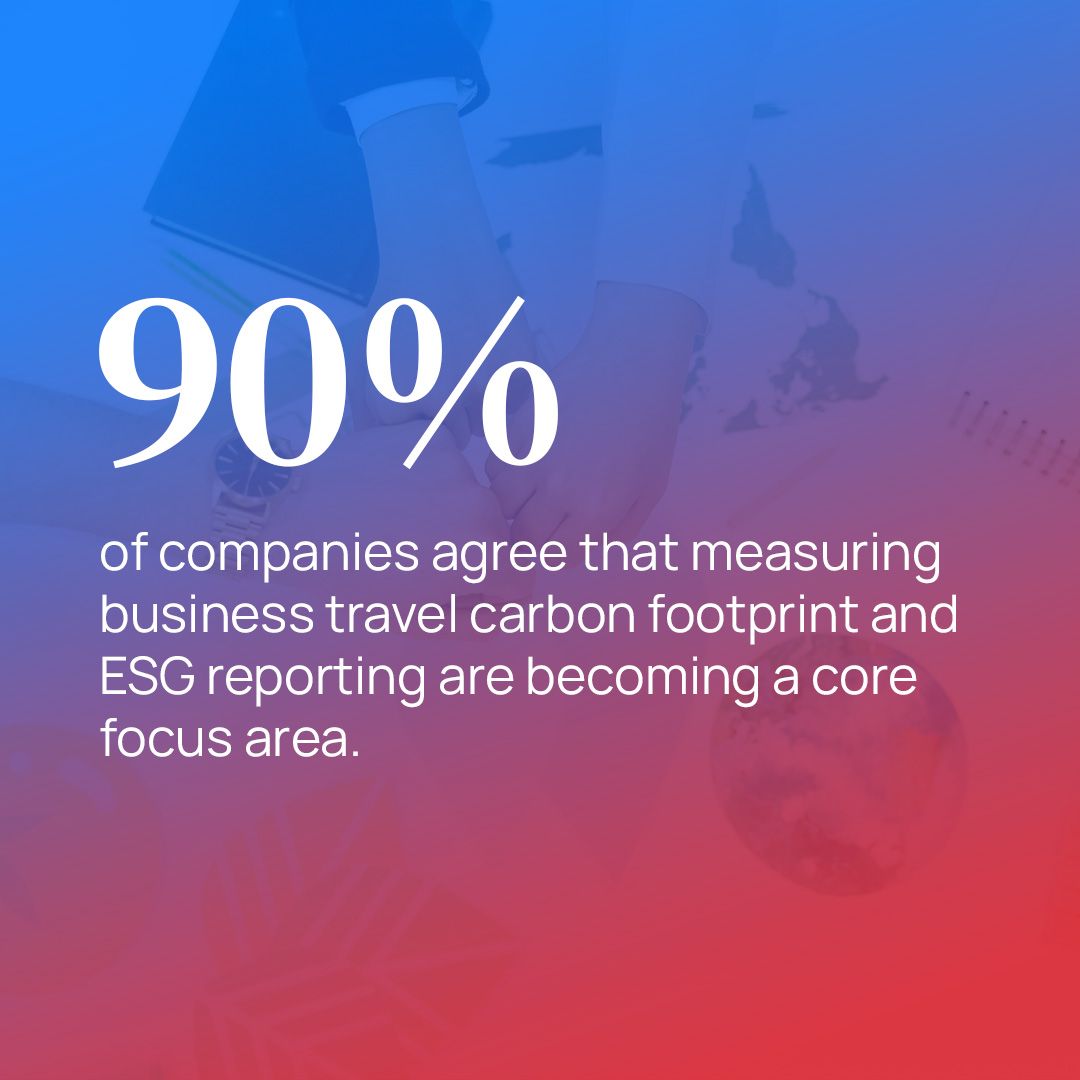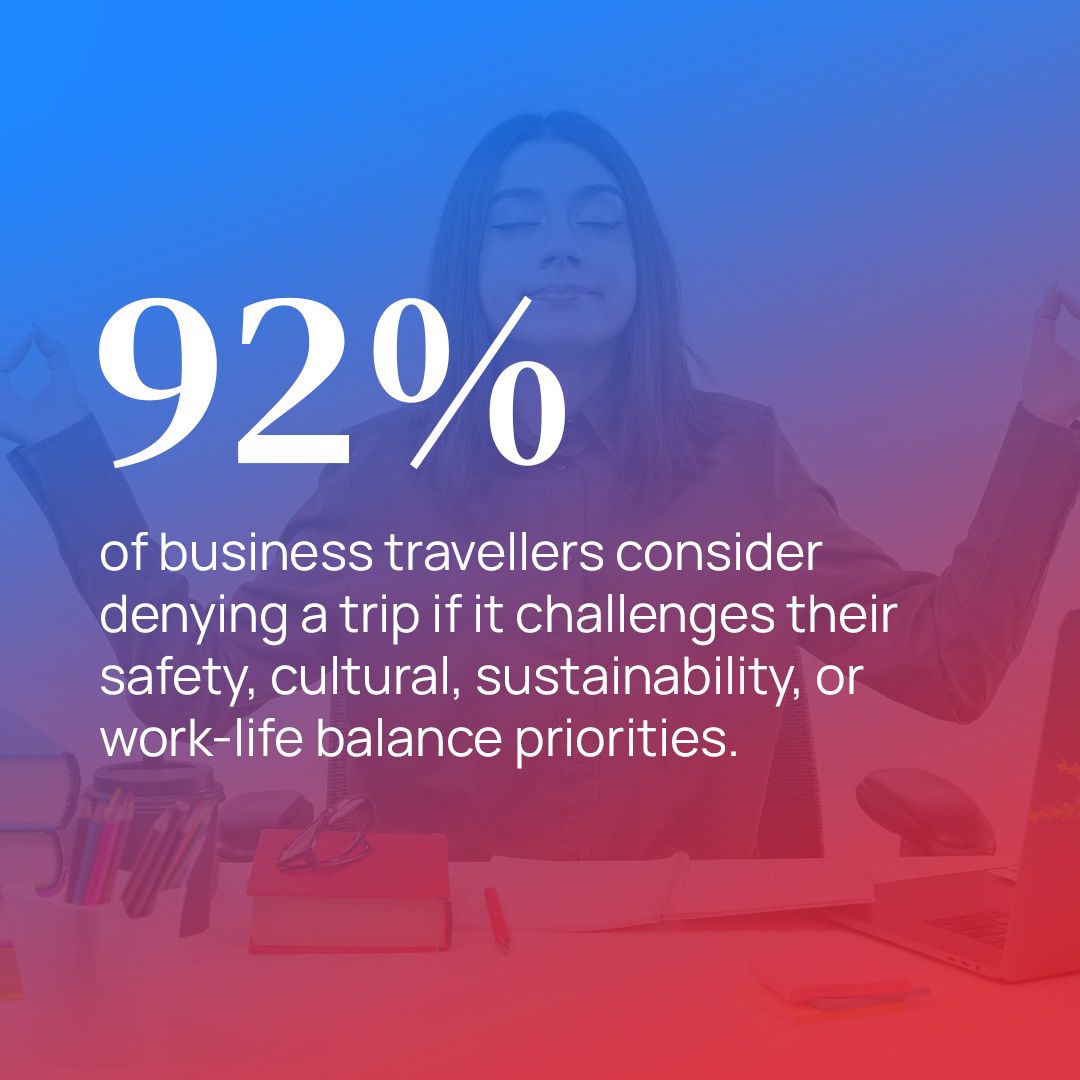The Future of Business Travel, 2025 & Beyond

The future of business travel is zip, zap, done.
That’s how fast it will be to deal with everything related to corporate T&E.
Wouldn’t you agree when we say that travel and expense (T&E) management, for long, has been working in siloes; ridden with inefficiencies?
Enterprises are troubled with bloated budgets, to and fro booking approval & reimbursement requests, policy violations, manual claim verifications, surprise cancellations, etcetera. To make things worse, companies don’t have the desired visibility and control over their T&E. Enterprise leaders are pouring millions into business travel, yet seldom can deep-analyze and take corrective actions on T&E spends. Most are frustrated about it: CFOs, travel managers, admins, travellers, finance teams, and business travelers. Everyone.
But all that is about to change.
In the next 3-5 years, the sloth-paced travel and expense management processes are going to be replaced by intelligent Agentic-AI-driven T&E systems. The future of business travel will be all about efficiency, speed, safety, convenience, sustainability, control, predictability, and hyper-visibility.
Read this insight by TripGain to know all the major trends shaping the future of business travel.

1. Business Travel Will Cruise To New Heights
Corporate travel isn’t slowing down anytime soon, as it is a key factor in driving growth for the company. In fact, the investments are poised to increase. In 2025, as per the Global Business Travel Association (GBTA), business travel expenses will see an upsurge of 10.8% and will cruise to $1.64 trillion.

So, in case you had any two thoughts about whether business travel expenses are justified or not, rest assured–you’re strategically headed right.
However, there is always a scope of optimising things for better efficiency, experience, and smart expense management. Companies do acknowledge the same. This explains the increasing adoption of technology among business T&E teams, especially artificial intelligence-led travel and expense management SaaS solutions.
2. AI-fication of Travel & Expense Management
T&E professionals are excited about AI. AI-driven T&E management systems are the imminent future of business travel. But if only things were that simple. A majority of leaders want to adopt machine learning (AI) in T&E, however, 61% say that the adoption of new-age technologies is a challenge. One-third of them see embracing AI as the biggest tech challenge for T&E. But leaders do understand that overcoming these hurdles is crucial for efficient growth in the long run. Today, the T&E teams at medium and large enterprises in North America, Europe, and the Asia Pacific are concerned about the inefficiencies in business travel management. To an extent, these inefficiencies are holding them back and hurting the bottom line. For instance,
- CFOs are concerned about the T&E spending blind spots, budget planning, policy compliance, and even receipt frauds.
- Security posture is a big concern for CIOs, and IT teams are exhausted from integrating 1000s of travel providers into their systems.
- Travel admins are at their wits’ end, often burying their face in their palms over last-minute booking requests, a parade of reimbursement requests that don’t comply with their organizational travel policies, heaps of receipts in emails, and disparate T&E software.
- Procurement people feel their vendor and supplier negotiation capabilities are overshadowed by the IT team's ability to integrate new vendors into their T&E tech infrastructure.
- Finance teams feel overwhelmed ensuring compliance with regulatory requirements, sustainability goals, and timely reimbursements.
The point is, with close to 800 million business travellers, enterprises have no option but to embrace digital transformation and place cogs in place to automate T&E as much as possible. Today, 46% of travel and procurement professionals are confident about technology transforming and improving the future of business travel. Business travelers are getting more acquainted with AI-driven travel itinerary planning. And CFOs are open to actively working with IT teams to kick off AI initiatives. This is exactly what we help our customers with! TripGain helps CFOs and enterprise T&E leaders automate their travel and expense management end-to-end by empowering them with our intelligent AI-led unified T&E solutions.
3. Sustainability Is Rising In Prominence

Domestic flights top the list of CO2 contributors for every KM of travel. Diesel cars are not far behind, followed by short-haul and long-haul flights. With countries like France curtailing short-haul flights and pushing enterprises to rely more on rail and road for local business travel, about 90% of companies agree that measuring business travel carbon footprint and ESG reporting are becoming a core focus area.
Business travelers are equally committed to reducing their carbon footprint, especially with the Gen-Z workforce being more environmentally conscious. 29% of enterprises have prioritized providing sustainable traveling options as their top focus.
But it’s not a road without bumps and blocks.
Sustainability options come with a caveat: costs. This puts organizations in a tough spot, as for one-third of them, business travel cost reduction is a top focus.
Again, the use of AI and automated T&E software could be a real impact-maker for companies to be more environmentally responsible.
For instance, with TripGain-
- You get real-time insights on the most environment-friendly itineraries that won’t bloat your business travel budgets. It will be bound by the budget constraints and comply with the travel and expense policies, too.
- You can make environmentally conscious decisions at every stage of your business travel— booking flights, hotels, cabs, and restaurants.
4. Employee Well-Being, Bleisure, and Travel Flexibility

Employees want to do more business travel. Gen Z tops this list. 59% of Gen Z employees are willing to take more business trips. And about half of them are vocal for extending business travel into personal leisure trips. However, despite all the excitement, one-fourth of the corporate travellers will solely decline a business trip opportunity if they don’t get flexible options.
Today, travelers expect employers to adopt AI-powered travel planning tools for better well-being and safety guidance. Beyond well-being, they also want these T&E tools to help with visa and documentation support, seamless expense capturing and reporting, and sustainability choices. Employees even expect support from their companies to help them effectively use these AI tools- Millennials more so than Gen Z, Gen X, or Boomers.
These factors explain why flexibility will be a prominent driver of the future of business travel. Already, providing flexible business travel options is a top focus area for 40% of employers.
However, a significant chunk of travelers feel that companies are trying to limit their flexibility choices to control costs. Managing these conflicting priorities/interests of different stakeholders is giving travel admins and managers a hard time. One way to overcome this is the evolution of how travel policies are made and maintained at enterprises. Dynamic policies can shape the future of business travel for the better.
5. T&E Teams Are Experimenting With More Inclusive Dynamic Corporate Travel Policies
Static business travel policies with blanket rules for everyone sound so mesolithic. You can no longer afford to be stuck with legacy travel policies. Your T&E teams need to amp up the game.
If you are an innovative leader in your space and care about your employees and your employer branding, dynamic adaptive travel policies should be on top of your mind.
Today, you can use data, AI, and modern T&E technologies to create intelligent dynamic travel policies. Such policies can address the flexibility, sustainability, convenience, travel experience, and personalization needs of individual corporate road warriors. Moreover, it can also serve the interest and business priorities of the organization in terms of meeting ROI on business travel investment, ESG goals, and cost optimization.
In fact, these policies can go beyond usual cost optimization and compliance checks to transform the future of business travel. For instance, you can make business travel more inclusive.
66% of employees feel that they do not get equal travel opportunities due to some sort of discrimination, be it due to age, gender, role, mode of work, or something else. Diversity at workplaces and the complex nature of how companies operate today (in-office, remote, and hybrid) are making it challenging for leaders to be in control of the experience they deliver to the employees. But you can make smart travel policies that are dynamic and flexible to ensure that you are more inclusive.
At TripGain, we are always looking for customers who want to lead the industry and help them actually lead it. Get in touch with our team to find out about our latest innovations in T&E.
6. Off-the-shelf Unified Travel and Expense Management System
Corporate T&E management isn’t a straightforward road to navigate in 2025. There are so many moving pieces.
With legacy tech, T&E becomes more difficult than solving the Hamiltonian cycle-based Fractal Maze, which is the toughest maze to solve. However, with AI, data, and automation technologies almost becoming readily available commodities, you can find a good solution that unifies your T&E operations.
40% of leaders say that technology evolution is a barrier to their travel program. It’s not surprising. By its very nature, tech is always evolving. What’s making the headlines today might become a legacy tech soon. Maybe this is why off-the-shelf T&E SaaS solutions often make sense. Your SaaS solution provider takes care of the tech, and you can focus on driving the business value. Companies are increasingly investing in innovative tech like cloud-based SaaS solutions to streamline their T&E processes. You too can.
To Sum Up!
Corporate travel is important for business growth. It is not going anywhere anytime soon. The travel investments for businesses are already north of what it was in pre-COVID days. However, T&E operations cannot continue to function like they used to. Employee expectations and desire for flexibility and convenience are on the rise, and companies need to prioritize it if they want to retain and attract awesome talent and if they want to continue yielding good ROI from their business travels.
Also, travel leaders cannot deny the inefficiencies that T&E processes are grappling with, and they need to proactively embrace innovative solutions and partners that can expedite the digital transformation of their organization and improve their carbon footprint. Especially artificial intelligence-led solutions for proactive travel fraud detection, fixing the leakages to avoid business loss while amplifying the employee experience with personalized itineraries for corporate travelers, dynamic travel policies, real-time visibility into T&E, and proactive reimbursements.

Nishant Choudhary
Content MarketerIn this article
1.Business Travel Will Cruise To New Heights
2. AI-fication of Travel & Expense Management
3.Sustainability Is Rising In Prominence
4.Employee Well-Being, Bleisure, and Travel Flexibility
5.T&E Teams Are Experimenting With More Inclusive Dynamic Corporate Travel Policies
6.Off-the-shelf Unified Travel and Expense Management System



